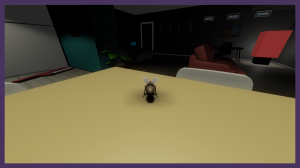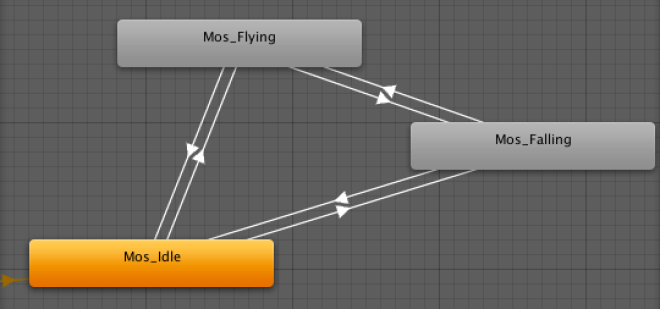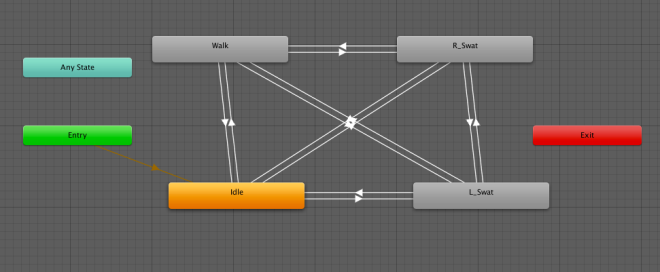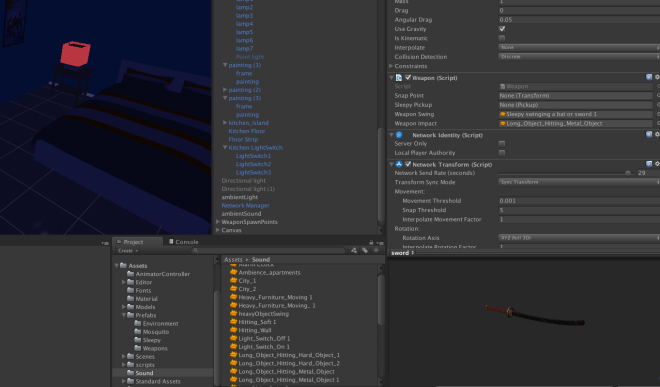Working on this project for the past term has honestly been a challenge. I love the potential Swat the Bug possesses; should we keep working on it, this could be an actually unique product. Due to the difficult production (honestly, what game isn’t difficult?), should we continue development?
Of course we should!
This week I also did a bit of work on the game from San Francisco:
- Helped Anna write the outline for the presentation and edited the actual presentation
- Added the pickup points on every weapon
- Tried to make a better light-switch. Said switch has an orange light, but doesn’t flip position upon collision. Jal ended up taking care of this. Thanks Jal.
Lessons Learned
Overall, I’d say the team worked well together. There definitely were moments of communication failures (“stop assuming!”), but we seemed to get through this without too much drama.
For design lessons, I think I learned, first hand, that a designer must wear multiple hats. I enjoyed this immensely. Not just as a bullet point on my resume; that part’s very nice. I relished the hat juggling because I was helping out the team.
I do wish that certain design decisions had been made clear far earlier in the life of the project. I’m not trying to shift or take blame, but that hampered our progress. Our communication also did slow progress, as did the art production. Next time, someone else should have either filled the art lead role, or taken Anna’s producer responsibilities. She’s fantastic at both, but at multiple points she was overwhelmed with model revisions and the like. The art team though, man, they seriously brought it. Our game looks great.
I also felt a distinct uneasiness of where I stood in the decision making process. The game is Kai-Lin’s baby, but at other times production was much more fluid. I think Kai-Lin also needing to approve everything became a bottle-neck at later points in development as well. And it goes without saying that Jal went above and beyond with this game, being the sole dedicated programmer.
The Road Not Taken
In the future, I will push to have a working, simple prototype as soon as humanly possible. Maybe adopting John Berton’s “rough to fine” mantra of requiring a new pass of the entire project every week. Aka use Scrum development more extensively. I’m also going to set deadline milestones in all my projects going forward (to be fair, we did this), but adopt a mindset of not turning back and redoing earlier decisions once a point in time has been passed. Should we continue development, I’d like to see the game evolve into a number of modes, destructible environment objects, more weapons, and see the return of the beloved mini-games.


















